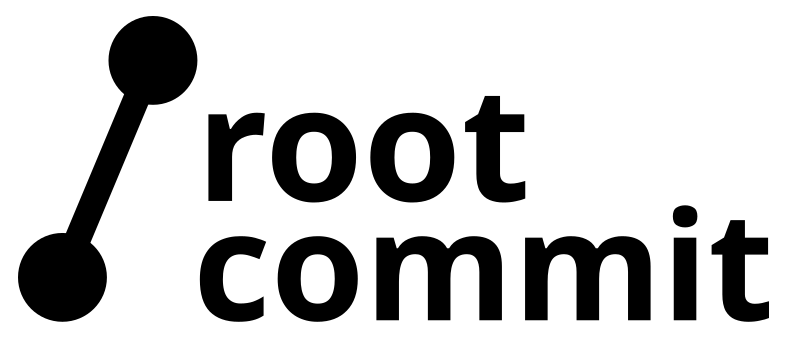Warning: no in-person session currently planned. Please let us know about the location you would be interested in for such a course.
All you need to know to run Linux and applications on your own system.
Overview
Everything you need to know to build, boot and debug your own embedded Linux system, leveraging many features implemented by the Open Source community. Add your own applications.
Starting in a very progressive way from the ground up to understand every component deployed in the system.
Using progressive but challenging practical labs and varied techniques to make the learning always stimulating and fun, and above all to make it stick. At least 75% of the time is dedicated to practical activities. Learn by doing!
Description
| Type | In-person |
| Mix | 25% theory – 75% practical activities |
| Language | English |
| Max participants | 8 |
| Duration | 5 days |
| Hardware | BeaglePlay board with TI Sitara AM625 SoC (ARM64) |
| Linux kernel version | 6.12 (LTS) used in practical labs |
| Prerequisites | Familiarity with the Linux command line Familiarity with Embedded Linux. |
Upcoming sessions
| Trainer | Dates | Cost | Register |
| Michael Opdenacker | Feb 23–27, Mar 2–5, online 15:00 to 19:00 UTC+2 Seats left | 1,490 EUR 1, 2, 3 |
1 We want our training to be accessible to individuals around the world. If our standard rate is a barrier due to local income levels, please apply anyway — we’ll do our best to offer a suitable price.
2 Individuals (all countries, not paying through a company) are subject to + 20% V.A.T. However, we offer a discount on the base cost to cancel the impact of V.A.T. and keep the same total price. See also 1.
3 Only for French companies: + 20% V.A.T.
Available discounts
The below discounts can be combined, up to a limit of 400 EUR per participant.
- 200 EUR returning participant discount for any extra course taken by the same participant at most 12 months after another one.
- 200 EUR early bird discount for any registration at least 2 months before the session dates.
- 200 EUR extra participant discount for each participant from the same entity (same invoicing address) in addition to the first one.
If V.A.T. is applicable, it applies to the amounts before V.A.T.
Agenda
Part 1 – Overview, bootloader, Linux kernel
- Demo: Embedded Linux from scratch in 30 minutes.
- Introduction to embedded Linux.
- Differences between desktop / server and embedded Linux distributions.
- Interacting with a live embedded Linux system
- Choosing a hardware platform. RAM, storage and CPU requirements.
- Bootloader principles – Booting on ARM, RISC-V and x86.
- U-Boot bootloader, most useful commands. How to load and boot a Linux kernel.
- The Linux kernel: understanding development and release process, getting the sources, configuring and building
Part 2 – Booting and basic root filesystem
- Multiple options for booting the Linux kernel
- Choosing a C standard library and cross-compiling toolchain.
- Booting over NFS – Basic system startup with BusyBox.
- Filesystem contents.
- Building a minimal root filesystem.
- Configuring system startup with BusyBox.
- Available filesystems for block storage – How to flash.
- Booting the board from SD card.
Part 3 – Declaring and accessing hardware – Adding Open Source components
- Working with raw flash storage.
- Describing hardware – The Device Tree. Using Device Tree Overlays.
- Working with kernel modules.
- Accessing hardware. Application on storage devices, LEDs, buttons, I2C sensors, audio and network devices
- Beyond Linux kernel and BusyBox: adding other open source components.
- Understanding and comply with Free Software licenses and constraints.
- Cross-compiling open source components – Understanding the manual way.
Part 4 – Build systems and system startup
- Automating system building – Pitfalls to avoid.
- Introduction to Buildroot.
- Introduction to BitBake, OpenEmbedded, Yocto Project and its terminology.
- Building a system image with Buildroot.
- Building a similar system with Yocto Project.
- System startup and hardware management with systemd and udev.
- Introduction to software stacks: graphics, audio, video.
Part 5 – Applications, debugging, system productization
- Build your own software.
- Profiling and tracing applications.
- Remote debugging. Using Visual Studio code.
- Final challenge: fix a broken system with multiple types of bugs.
- Embedded system security: bootloader, kernel, system services, applications.
- Generating a Software Bill of Materials (SBoM).
- Checking for vulnerabilities.
- How to achieve binary reproducibility.
- Embedded system update strategies and solutions.
- How to leverage the resources of the embedded Linux and kernel community. How to contribute to it.
- Extra resources: websites, conferences, books.
What’s special in our in-person courses
Much better interactivity with the instructor and other learners compared to an online setting. It’s also much easier to get help.
Board and accessories provided: except for the Linux computers, electronic boards and accessories are provided by Root Commit for the duration of the course.
Course never postponed: once you are registered to one of our public sessions (after we receive your payment), you are sure to participate at the expected dates. We don’t postpone sessions, even with a very small number of participants.
Majority of practical activities, representing at least 75% of learning time.
Short lectures only: sequences of theory never exceed 30 minutes, and are interleaved with quick or longer practice. Too long series of lectures are hard to digest, especially in an online setting.
Technical and teaching experience: courses taught by an industry veteran with more than 20 years of experience in embedded Linux and 30 years using and advocating for Free and Open Source Software.
See also: Why choose Root Commit courses?
Practical details
Registration
To register to one or several of our sessions (in-person or on-line), please use this contact form.
If you have more than 4 people to register, you may consider ordering an on-site, in-person training session. Just ask us.
Venue

The session will take place at Hotel Mercure Pont d’Avignon Centre (map).
The hotel offers a discounted rate for participants to our session. If you are interested in staying there, call them and let them know about your participation. Otherwise, many affordable hotels and accommodation solutions are available within walking distance in Avignon. The Avignon city center is great for relaxing and having dinner in the evenings.
Going to Avignon is also an opportunity to visit the famous Provence region in France before or after the course.
How to get to Avignon
See the Getting to Avignon official guide.
By train or by BUS

Given its low carbon emissions and fast connections to other cities in France, rail is Root Commit’s recommended way to reach Avignon, either directly from your home town if you live close enough in Europe, or from the Paris (3 hours) or Marseille (60 to 90 minutes) airports.
Here are websites on which you can book your tickets:
BY CAR
If driving is the most convenient solution for you, and if you find accommodation in the Avignon City Center, keep in mind that you will have to find a car park which will add up to the total cost (~50 EUR for a weekly pass). You probably won’t need your car at all during the course, but will find it handy if you wish to visit the area on the week-end. The most convenient parking lot for the venue is Palais des Papes.
To make your drive to Avignon more enjoyable and environmental friendly, have you tried carpooling? BlaBlaCar is a service that works great in France.
By plane
The airports that are closest to Avignon are:
- Marseille: the closest airport. You will have to take a shuttle to the nearby train station, and from there, you can get to the Avignon Centre train station. Expect a transit time from 90 minutes to 2 hours. See instructions.
- Lyon: you have fast train connections (50 minutes) between the Lyon airport train station and the Avignon TGV train stations. Otherwise, with regular trains, you can get to Avignon in about 2 hours.
- Paris Charles de Gaulle: though further away, there are fast (3 hours) connections between the Paris airport and Avignon TGV train stations. If you’re coming from far away, flying to Paris and then taking the fast train to Avignon can be faster than taking another flight from Paris (or another European city) to Marseille. Unless you get a direct flight to Marseille, it also much better in terms of CO2 emissions. Of course, you could also enjoy a few days in Paris before or after the course.
What do I need to bring?
PC running Linux
For this session, you will need a laptop computer running a native installation of Linux, with one of the distributions currently supported by the Yocto Project. This way, you can practice with your preferred distribution, as you would do in your real job. We suggest Ubuntu 24.04 if you don’t have any preference yet.
If you haven’t installed Linux on your laptop yet, most Linux distributions will allow you to install Linux alongside Windows, after making enough free space. Note that we don’t support the use of Virtual Machines (to run Linux from inside another operating system), as from our experience, connecting the Linux VM to the board and other devices is an endless source of distractions. Using VMs also causes a substantial loss of compiling performance.
This laptop should have at least 16 GB of RAM, a CPU with at least 4 physical cores and at least 50 GB of free disk space (200 GB for the Yocto course). It should also be equipped with a micro-SD card reader (internal or external).
What is provided?
| In-person public sessions | In-person private sessions | Online public sessions | |
|---|---|---|---|
| Electronic board and all its required accessories, for the duration of the course | ✅ | ✅ | ❌ |
| Lunch, morning and afternoon breaks | ✅ | ❌ | ❌ |
| Electronic copies of the lecture and practical lab materials. | ✅ | ✅ | ✅ |
| Solutions to practical labs | ✅ | ✅ | ✅ |
| Video recordings of the lectures from the trainer. | ❌ | ❌ | ✅ |
| Electronic training certificate, after successful completion of the course, which can be shared on your LinkedIn profile and on other social media. | ✅ | ✅ | ✅ |
FAQ
Q: It is possible to leave a little earlier on the last day?
A: Yes, if necessary for some participants, we will make sure that all lectures are over before 4:00 pm.
See also our FAQ for all types of courses and our sustainability efforts.


